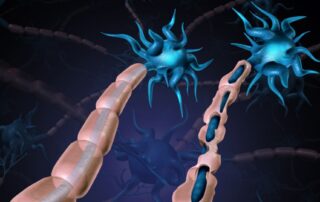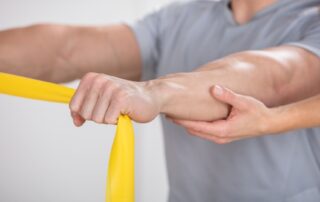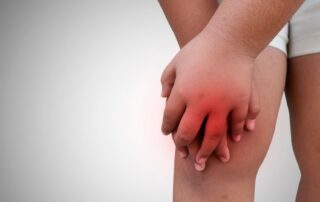How to Safely Return to Activity After a Break
Canadian winters can be hard in many ways. In addition to shorter, darker days, the ice, snow and cold keep many people indoors and much more sedentary than they are inclined to be. When milder weather returns, we are naturally excited to get back to outdoor activities we have missed over the winter. Whether it’s running, gardening, golfing or another activity, knowing how to safely return to activity after a break is key. To ensure a safe and pain-free return to those activities, it is important to build up your strength and activity tolerance gradually. Simply jumping back into [...]
Peripheral Nerve Injury Treatment
The peripheral nervous system is a network of motor and sensory nerves that connect the brain and spinal cord to the rest of the body. The system is the pathway telling your muscles to move. It also returns information about touch, temperature and pressure to the spinal cord and brain. Damage to the peripheral nerves can result in a host of symptoms, including numbness, cramps or loss of movement. In this article we will look at the different classifications of this type of injury as well as peripheral nerve injury treatment. Causes of Peripheral Nerve Injury Damage to the [...]
Effects of Brain Injury: How Location Impacts Outcome
The effects of brain injury are largely dependent on the location and severity of the trauma. The brain is a complex organ composed of three main parts; the cerebrum, the cerebellum and the brainstem. These areas communicate via billions of neurons to control many of the body’s functions, like movement, speech, thoughts, and emotions. In this article, we look at the structure and function of these parts of the brain and the symptoms that may result due to injury. Table of Contents: Cerebrum anatomy and function Cerebellum anatomy, function and injury Brain stem anatomy, function and injury Neuroplasticity and neurological [...]
Shoulder Replacement Physiotherapy
Shoulder pain and disability caused by degenerative diseases and injury can lead to the need for shoulder replacement surgery. Most people who undergo shoulder replacements enjoy life with less pain. Shoulder replacement physiotherapy is critical to the success of this type of surgery. This article will help you understand shoulder joint anatomy and reasons for shoulder replacement surgery. We will also discuss the two types of shoulder replacement surgeries and detail shoulder replacement physiotherapy protocols. Shoulder Joint Anatomy Your shoulder is made up of three bones: your upper arm bone (humerus), your shoulder blade (scapula), and your collarbone (clavicle). [...]
Juvenile Idiopathic Arthritis Treatment
Juvenile idiopathic arthritis is the most common form of arthritis in children and adolescents. It is a chronic condition that causes pain and swelling in the affected joints.[i] Juvenile idiopathic arthritis treatment can help with maintaining and improving function and reducing symptoms so that kids can get back to doing things they enjoy. In this article, we will look at the symptoms, causes and subtypes of juvenile idiopathic arthritis. We will also discuss juvenile idiopathic arthritis treatment options, including physical therapy. What is Juvenile Idiopathic Arthritis? Juvenile idiopathic arthritis, also known as juvenile rheumatoid arthritis, is an autoimmune condition. [...]
Benefits of Good Posture: How to Find Your Optimal Posture
Therapists often assess and compare patients’ postures to an orthopedic ideal. However, it has been shown that what some physiotherapists (and the vast majority of the public) would consider good posture, may not necessarily be linked to better health outcomes.[i] For example, a person who is a manual wheelchair user may have a significantly different optimal posture compared to a 75-year-old with osteoporosis and a history of vertebral fractures. In the same light, an optimal posture for a person who sits at a desk all day would be different from a person who works with their hands all day [...]






